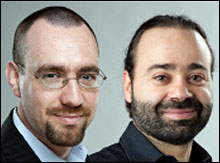In previous columns, we’ve discussed the importance of developing a solid business case to determine how to choose an RFID-enabled real-time location system and which use case
to address first. We’ve also explained how to evaluate the different proposals you’ll receive from RFID health-care providers. These proposals typically include the total cost of ownership, and when and how you’ll get a return on your investment, based on the benefits you’ll receive.
Now, we’d like to discuss the difference between hard and soft benefits. Hard benefits are those that will be converted into cash savings or additional revenues. Soft benefits will make your hospital run more smoothly and more efficiently, but they won’t necessarily impact your bottom line. This is an important distinction, because many health-care providers tell potential clients they will see cost savings from soft benefits. Often, they back up this claim with various numbers and calculations. But while it’s important to include soft benefits in your business case, you should not factor them into your ROI. Here’s why.

Both RFID asset-tracking and replenishment solutions will deliver hard benefits, including a reduction in inventory. Both solutions will also provide soft benefits: They free up nurses’ time, which is valuable. Nurses won’t have to waste time searching for equipment or counting stock and requisitioning supplies. Their freed-up time can be spent treating patients. But the few minutes saved every hour aren’t likely to be directed into billable patient-care activities.
With improved inventory visibility, RFID providers might suggest you can optimize limited and valuable storage space. But in reality, a storage location won’t be converted into a patient room that increases revenue.
Some soft benefits will result in cost savings, but there are too many variables to plug specific numbers into your business case. Real-time data, for example, will enable more informed decision-making, which, in turn, can improve operations. But how do you quantify the cost savings in advance?
Other solutions will deliver cost savings but not on a regular basis. RFID hand-hygiene solutions can increase hand-washing compliance and reduce health-care-associated infections. That can result in shorter patient stays and a faster hospital-bed turnover rate. But a reduction in HAIs from a hand-hygiene solution varies from hospital to hospital—and even within a hospital, from month to month. Similarly, tracking medical supplies can facilitate identifying specific items in the event of a recall. But a hospital will only see a cost savings if such an event occurs.
We do not underestimate the value of soft benefits. In addition to the benefits mentioned above, they can reduce work pressure on nurses, improve patient satisfaction and increase a hospital’s reputation. But hospitals that make a distinction between hard and soft benefits will be able to develop a realistic business case that will result in a more accurate ROI—and deploy an RFID solution that meets their goals.
Ygal Bendavid and Harold Boeck are professors in the school of management at the Université du Québec à Montréal, and members of RFID Academia‘s research board.

